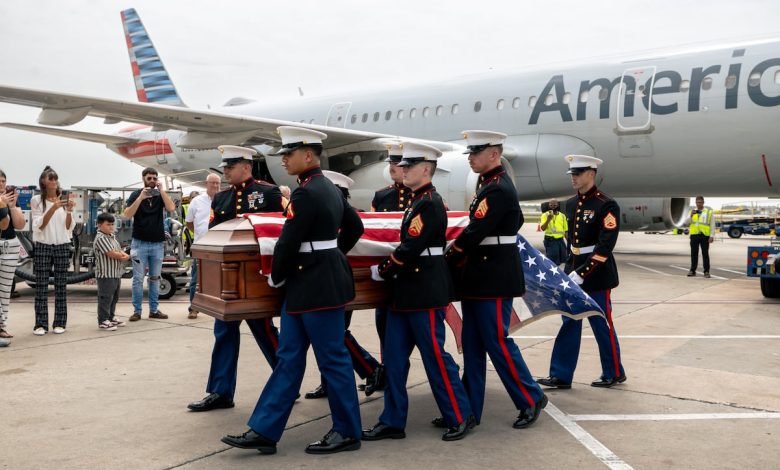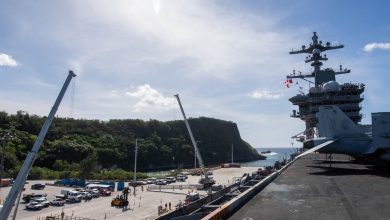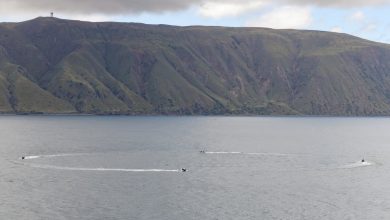After more than 80 years, this Marine returned home from Guadalcanal

Following a decade-long recovery and identification mission led by the Defense POW/MIA Accounting Agency — and more than 80 years since he was killed in the hellish Guadalcanal campaign — U.S. Marine Corps Pvt. Charmning Rowe returned home this month.
“Today we close the chapter on a story that began in 1942 and bring home a hero,” said Sgt. Matthew Wedding, the Marine charged with escorting Rowe’s remains. “This mission embodies our commitment to never forget and to fulfill our promise to bring every Marine home.”
A native of Orlovista, Florida, Rowe enlisted in the Marine Corps on Jan. 20, 1942, just six weeks after the United States’ entry into World War II. Following recruit training at Parris Island, South Carolina, Rowe was assigned to Company A, 1st Battalion, 7th Marine Division.
The American campaign to wrest the island of Guadalcanal from the Japanese began on Aug. 7, 1942. The first land campaign of the Pacific, Guadalcanal was to play an outsized roll in turning the Japanese tide in the war.
It was, as historian John D. Lukacs writes, “America’s first steps toward the ultimate, unconditional victory over Japan almost exactly three years later.”
Between July 1942 and February 1943, the U.S. won the naval battle, the air battle and the land battle — initially with nothing more than sheer tenacity and courage, but then by grinding down the enemy with increasingly superior lines of supply.
At just 21 years old when he arrived on Guadalcanal on Sept. 18, 1942, Rowe was among those many green recruits facing down a ruthless enemy. He would be killed only six days later.
During a patrol southwest of the vital Henderson Field, Rowe engaged in a firefight with Japanese forces near Mount Austen. Rowe and three other Marines — Pvt. Randolph R. Edwards, Pfc. Erwin S. King, and Pfc. Morris E. Canady — were killed by enemy gunfire and buried in hasty battlefield graves dug by his fellow Marines.
The graves were known as Hill X and Hill Y. Six other fallen Marines would shortly be buried alongside the men.
However, according to the Marine Forces Reserve, “despite post-war efforts by the American Graves Registration Service in the late 1940s, none of the 10 Marines buried at Hills X and Y were recovered. In 1949, Rowe was officially declared ‘non-recoverable.’”
In 2012, the case was reopened by the Defense POW/MIA Accounting Agency following new intelligence that revealed postwar recovery teams may have searched the wrong locations due to mislabeled records, the Marine Forces Reserve wrote.
A 1942 aerial map that had gone previously unnoticed and unused in a Hawaiian museum archive held the key to locating Rowe and his fellow Devil Dogs.
In 2016, excavation efforts resumed, leading to the discovering of human remains and military artifacts.
On June 5, the remains of Rowe were, at long last, repatriated to his family in Orlando.
“This mission highlights the institution’s commitment to never leaving a Marine behind,” said 1st Sgt. Juan Duque, inspector-instructor, 4th Marine Logistics Group.
Claire Barrett is the Strategic Operations Editor for Sightline Media and a World War II researcher with an unparalleled affinity for Sir Winston Churchill and Michigan football.
Read the full article here








